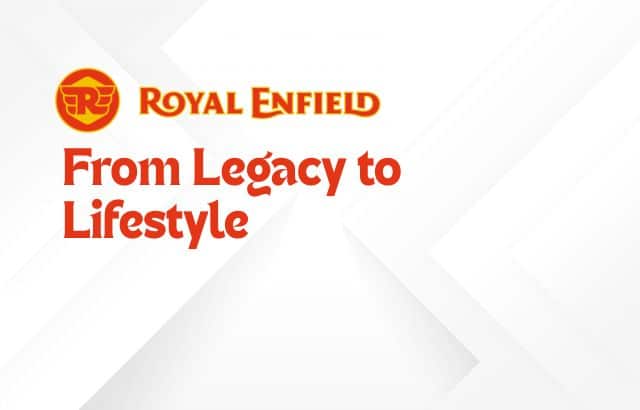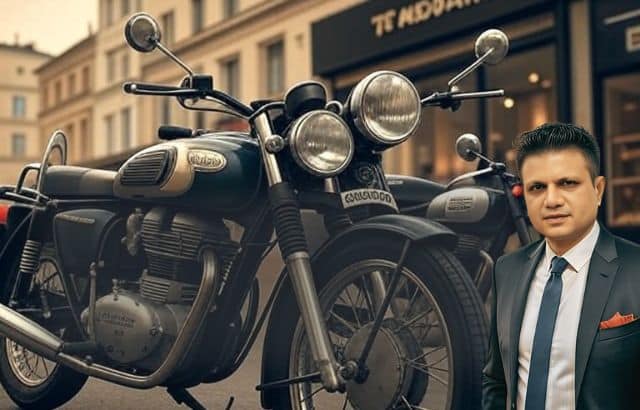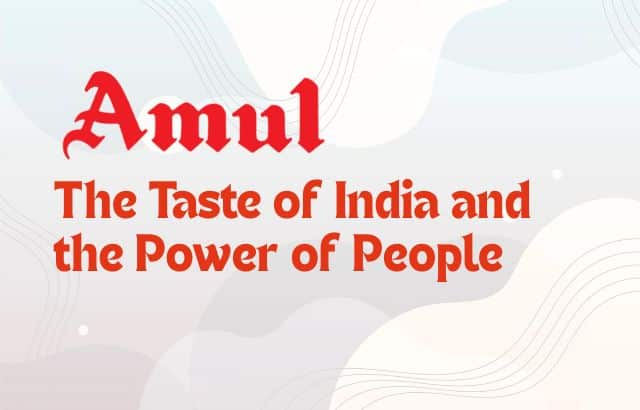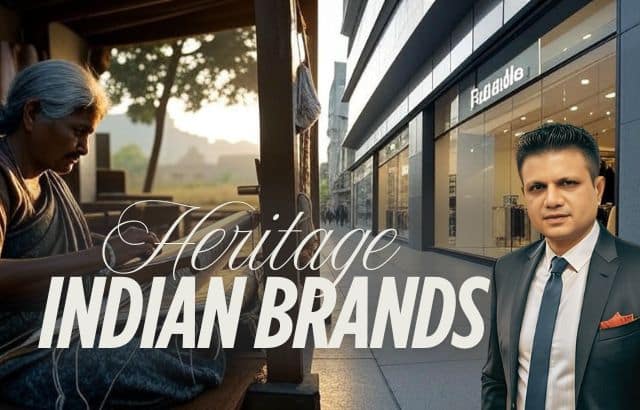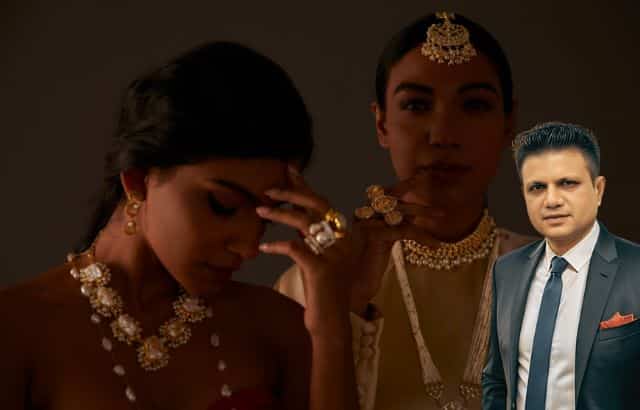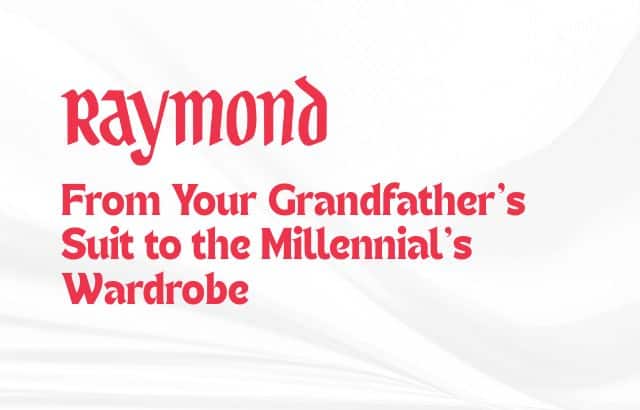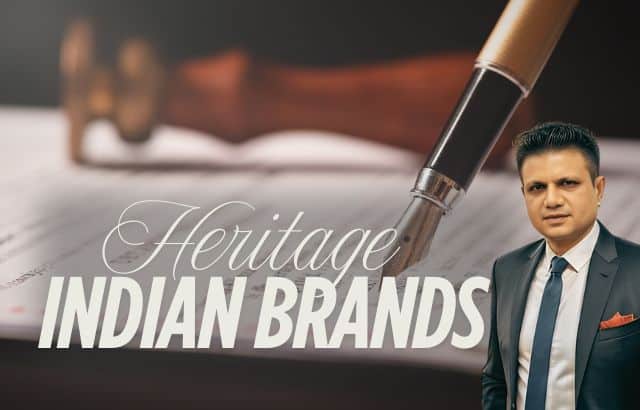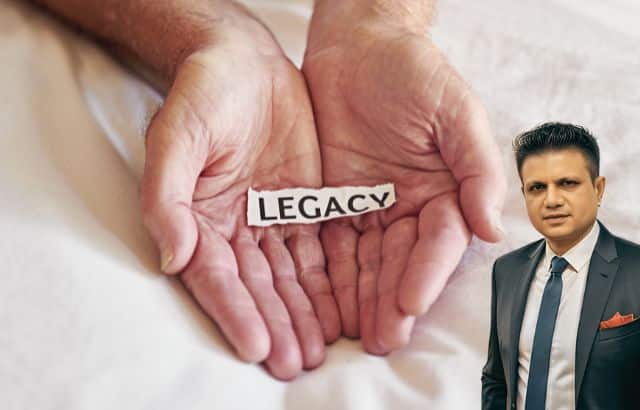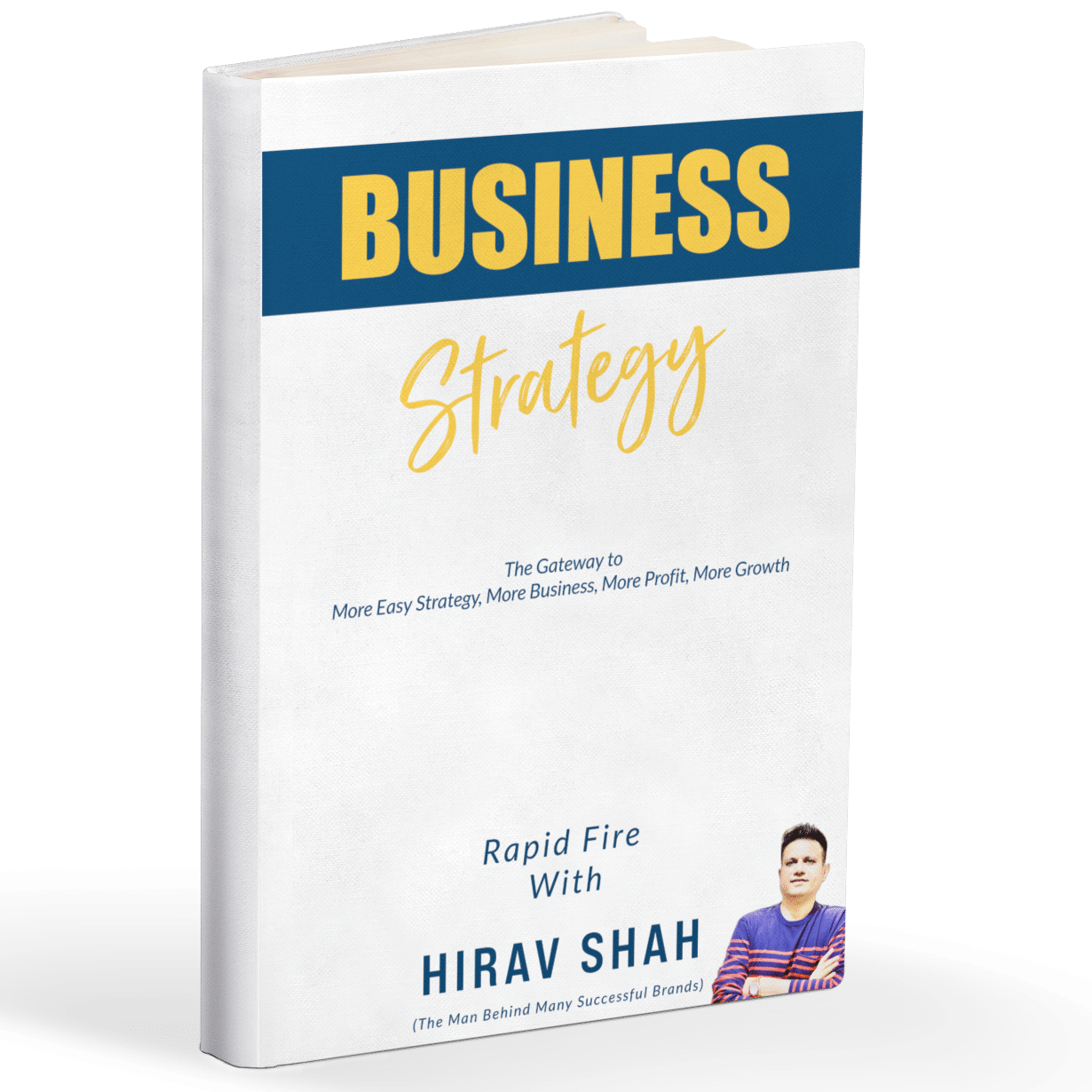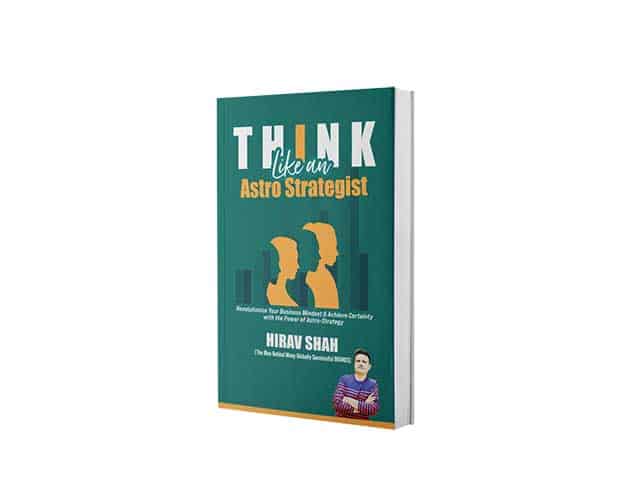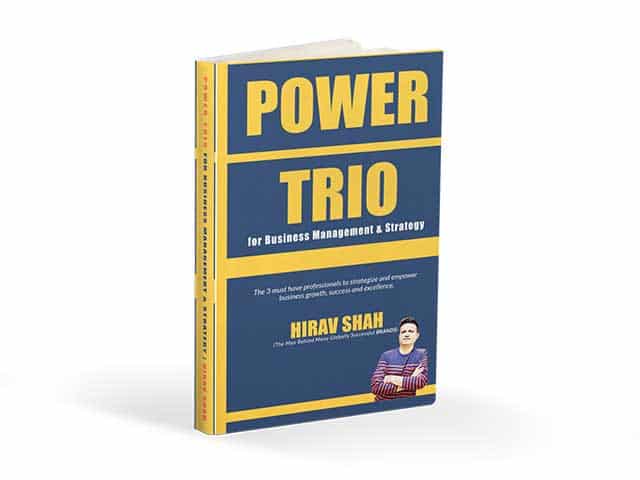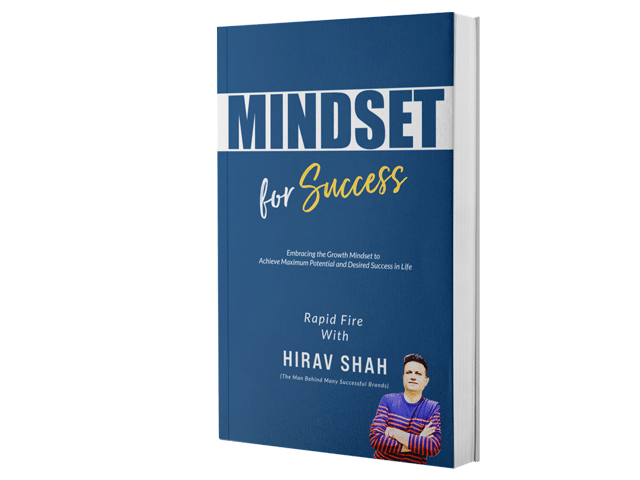Table of Contents
🧭 When Tradition Meets Transformation
In the ever-changing world of business, some brands evolve without erasing their identity. They adapt, reposition, and expand—but still stay rooted in what made them loved in the first place. These five Indian brands are perfect examples of how legacy, when aligned with strategy and storytelling, can become a timeless competitive edge.
“Reinvention doesn’t always mean reinvention of self—it often means reintroduction to the next generation.”
— Hirav Shah, Business Strategist & Turnaround Expert
Let’s explore five iconic brands that turned heritage into modern relevance.
🏍️ Royal Enfield – From Legacy to Lifestyle
🔧 Struggle: How Royal Enfield Became a Dying Symbol of the Past
Once a symbol of rugged masculinity, Royal Enfield was losing its grip by the late 1990s. Founded in the UK in 1901 and brought to India in the 1950s, it had become synonymous with unreliability—oil leaks, vibration, kick-start issues, outdated cast-iron engines, and poor service. While Japan was redefining two-wheelers with performance and style, Royal Enfield felt stuck in the past. Annual sales hovered under 50,000 units, and the brand lacked both innovation and direction. Customers were aging, and youth saw the bike as irrelevant.
⚡ Turning Point: Siddhartha Lal’s Vision That Reimagined Royal Enfield as a Lifestyle Brand
In 2000, Siddhartha Lal, a 26-year-old MBA from London and heir to Eicher Motors, made a bold move: he shut down 13 out of 15 divisions of the parent company and put all his focus on Royal Enfield.
His vision was clear—not just to fix a machine, but to reimagine an entire culture.
- The first big fix was engineering. Royal Enfield replaced the old cast-iron engine with the UCE (Unit Construction Engine)—a more reliable, easier-to-maintain system that preserved the signature “thump.”
- The next shift was positioning. Instead of competing with fast bikes, Enfield leaned into retro charm, rugged freedom, and emotional nostalgia.
- Then came the Classic 350, blending vintage aesthetics with modern mechanics. It struck a chord with millennials.
- Enfield also bet big on community marketing: events like Himalayan Odyssey, Rider Mania, and local biking clubs created loyal tribes.
- Globally, the launch of Interceptor 650 and Continental GT took the brand beyond India with a powerful presence in Europe and the Americas.
🏢 Empire Snapshot: How Royal Enfield Became a Global Midweight Motorcycle Leader
Today, Royal Enfield is a global motorcycle lifestyle brand with exports to over 60 countries.
- Annual sales peaked at 8 lakh+ units.
- Its bikes are sold in exclusive experience stores.
- It dominates India’s mid-weight motorcycle segment.
- With models like Himalayan, Hunter 350, and Super Meteor, it attracts both young urban riders and long-distance adventurers.
Royal Enfield has not only revived itself but created a new segment between commuter bikes and high-end super bikes—a space it now owns.
🌍 Legacy & Impact: Royal Enfield’s Role in Creating India’s Motorcycle Tourism Culture
Royal Enfield proved that a legacy brand can reinvent itself without losing its soul. Its transformation is now studied in global business schools as a masterclass in:
- Focused leadership
- Product repositioning
- Emotional branding
- Customer community building
It also reignited India’s motorcycle tourism culture, inspiring tens of thousands to take road trips across Ladakh, Bhutan, and South India.
📘 Lesson for Entrepreneurs: Focused Reinvention Can Turn Irrelevance Into Irresistibility
You don’t have to abandon your legacy to transform—just reposition it with clarity, consistency, and courage.
When faced with irrelevance, Siddhartha Lal didn’t copy the competition—he doubled down on identity. He didn’t sell speed—he sold soul.
🧠 Key Trait: Clarity, Community, and Consistency in Brand Repositioning
Focus + Visionary Branding + Emotional Storytelling
Siddhartha Lal’s leadership was razor-sharp. He bet on one product, one segment, one story—and built a billion-dollar brand.
“Where others saw a dying legacy, Siddhartha saw a timeless lifestyle. That’s the power of perspective.”
– Hirav Shah
🔮 Hirav Shah’s Strategic Perspective: Validating Royal Enfield’s Revival with Emotion and Execution
If Hirav Shah had been involved during Royal Enfield’s crisis phase, here’s how his 6+3+2 validation model could have further strengthened the brand’s direction:
- ✅ Diagnose the Root Problem: Confirm that the issue wasn’t just technical, but emotional disconnect with modern India.
- ✅ Transform the Vision: Align product engineering and storytelling with cultural sentiment—freedom, nostalgia, brotherhood.
- ✅ Accelerate Execution: Identify the most aligned launch periods using Astro Strategy for products like Classic 350 and Interceptor 650.
- ✅ Validate Brand Positioning: Ensure that the lifestyle pitch resonates not just in India, but across global markets (UK, US, Latin America).
- ✅ Reinforce 6+3+2 Alignment:
- Hard Work: Focus on mechanical overhauls.
- Mindset: Shift from “bikes” to “experiences.”
- Strategy & Skills: Rebrand, restructure, rebuild community.
- Execution & Luck: Launch at the right time, build events, earn trust.
- Hunger + Dedication + Consistency: Keep vision steady despite early doubts.
- Innovation + Marketing: Community-led campaigns, heritage storytelling.
“Reviving a business isn’t just a strategy—it’s about reigniting the dreams and sacrifices behind it.”
– Hirav Shah
🥛 Amul – The Taste of India and the Power of People
🔧 Struggle: How Amul Took on Exploitation, Inefficiency, and Colonial Brands
Post-independence India was facing a serious milk crisis. Farmers, especially in Gujarat’s Kaira district, were paid minimal rates by British-controlled private dairies like Polson, while consumers in cities paid high prices. Rural producers were powerless, underpaid, and unorganized.
In 1946, with support from Sardar Vallabhbhai Patel and local leader Tribhuvandas Patel, a group of farmers came together to form the Kaira District Cooperative Milk Producers’ Union. But launching and sustaining a cooperative was far from easy. With no modern processing units, cold storage, or distribution systems, Amul battled infrastructure gaps, financial shortages, and deep-seated distrust from farmers used to being exploited.
⚡ Turning Point: The Cooperative Model That Transformed Amul into a National Movement
The game-changer arrived in the form of Verghese Kurien, a young mechanical engineer who turned down global career opportunities to stay back and serve the cooperative movement.
Kurien’s strategic brilliance lay in building a three-tier model:
- Village-level collection centers
- District-level unions for processing
- State-level federations for marketing
This model ensured that farmers were owners, suppliers, and beneficiaries—aligning incentives across the chain.
Amul diversified from milk into butter, ghee, cheese, sweets, chocolates, and ice cream, maintaining high quality and affordability. And then, came India’s most iconic mascot—the Amul Girl in 1966—who used humor and wit to connect Amul with national conversations.
Unlike other cooperatives that eventually collapsed, Amul modernized constantly—investing in automation, cold chains, logistics, and rural tech training—without losing its soul.
🏢 Empire Snapshot: Amul’s Journey from Rural Gujarat to Global Dairy Dominance
Today, Amul stands tall as:
- India’s largest dairy brand with ₹55,000+ crore annual revenue
- Over 150+ dairy and food products, including ready-to-eat and frozen categories
- Presence in 50+ countries, including the US, Middle East, and Australia
- A cooperative of 36 lakh+ farmer families, running like a professional multinational
Amul isn’t just a dairy brand. It’s a people-powered institution that redefined India’s agri-business model.
🌍 Legacy & Impact: Amul as the Soul of India’s White Revolution and Rural Empowerment
With Amul as its cornerstone, India went from a milk-deficient country to the world’s largest milk producer. This became known as the White Revolution, and Verghese Kurien is rightfully called its architect.
Amul showed that business can be both profitable and empowering. Its legacy is reflected in millions of rural families finding stable income, women gaining financial agency, and India achieving food self-sufficiency—long before the startup wave.
📘 Lesson for Entrepreneurs: Build Systems That Uplift People and Outlast Leaders
The genius of Amul was not just in building a brand, but in building a self-sustaining ecosystem.
Entrepreneurs today must ask:
“Are we building scalable wealth or just temporary profits?”
Amul proves that clarity of structure and purpose can fuel longevity and national impact.
🧠 Key Trait: Visionary Structure, Collective Ownership, and Mass-Scale Branding
Amul wasn’t built on flash or foreign capital—it was built on clarity, courage, and community-led execution.
“When a brand uplifts lives, it becomes immortal. Amul did just that.”
– Hirav Shah
🔮 Hirav Shah’s Strategic Perspective: Validating Amul’s Social Impact with Scalable Business Strategy
If Hirav Shah had advised Amul during its expansion, here’s how his strategic and astro-aligned validation would enhance long-term results:
- ✅ Diagnose Scale Bottlenecks: Identify systemic inefficiencies in logistics and state-level coordination
- ✅ Transform Communication Strategy: Use festival calendars and emotional triggers in Amul Girl campaigns for higher resonance
- ✅ Validate State-by-State Expansion: Using Astro Strategy to time plant openings and market entries
- ✅ Execute Global Roadmap: Evaluate timing, region selection, and certifications for export markets
- ✅ 6+3+2 Alignment:
- Hard Work & Strategy: Built into the co-op DNA
- Execution & Luck: Timely interventions in dairy crisis
- Mindset & Skills: Training farmers as entrepreneurs
- Hunger + Dedication + Consistency: 75+ years of non-stop growth
- Innovation + Marketing: Timeless campaigns and product extensions
“When your brand helps others grow, the universe ensures your growth too.”
– Hirav Shah
🧵 Fabindia – From Rural Handlooms to Retail Royalty
🔧 Struggle: How Fabindia Balanced Artisan Roots with Retail Expansion
Founded in 1960 by John Bissell, an American working in India, Fabindia began as an export company selling home furnishings made by Indian artisans. The goal was noble: promote Indian craft in global markets.
But turning that into a consumer-facing lifestyle brand in India was not easy.
In the 1990s and early 2000s, retail was moving toward malls, branded fashion, and synthetic mass production. Fabindia’s earthy tones, khadi, handlooms, and loose silhouettes were seen as “NGO-ish,” not aspirational.
- Scaling was tough.
- Inventory was unpredictable due to craft-based production.
- There were internal concerns: Could Fabindia modernize without losing its artisanal soul?
⚡ Turning Point: How Fabindia Became India’s Most Trusted Ethnic Lifestyle Brand
Fabindia’s transformation began by expanding from kurtas to kitchens.
- They evolved into a full lifestyle ecosystem—including clothing, furniture, organic food, beauty, home decor, and wellness.
- Stores were designed like cultural havens, not generic showrooms—wood, brass, earthy lights, and open shelves created a calm, conscious experience.
- They embraced urban India’s shift toward sustainable, natural, and artisanal living.
- With launches like Organic India, Fab Home, and Personal Care, Fabindia became a one-stop shop for conscious consumption.
- Their retail growth followed a community-focused, slow-retail model—not hyper-scaling like fast fashion brands.
🏢 Empire Snapshot: Fabindia’s Rise as India’s Ethnic Lifestyle Leader
Today, Fabindia:
- Has over 300+ stores across India and overseas
- Works with 50,000+ artisans across 20 states
- Offers 7,000+ SKUs in apparel, furnishings, wellness, and food
- Is synonymous with conscious luxury, sustainable living, and cultural pride
🌍 Legacy & Impact: Building a Market for Conscious Consumption in India
Fabindia helped Indians rediscover pride in wearing handloom and living naturally. Before the word “sustainable” became trendy, Fabindia lived it.
They didn’t chase growth at any cost. They scaled with values, purpose, and harmony with rural producers.
📘 Lesson for Entrepreneurs: Scale Without Selling Out
Fabindia’s story is a reminder:
You can grow without abandoning your essence.
Stay rooted. But stay relevant.
🧠 Key Trait: Conscious Capitalism + Artisan-Led Growth + Purposeful Retailing
Fabindia didn’t build a brand—they built a bridge between India’s past and present.
“Fabindia made Indian living aspirational again—without selling exoticism.”
– Hirav Shah
🔮 Hirav Shah’s Strategic Perspective: Balancing Soulful Growth with Strategic Scale
Here’s how Hirav Shah’s model would guide Fabindia’s ongoing journey:
- ✅ Validate Product Extensions: Timing the shift into wellness, food, and beauty based on market and energetic alignment.
- ✅ Store Launch Strategy: Identifying ideal launch zones (culturally and numerologically aligned) for maximum resonance.
- ✅ Craft Cluster Management: Diagnosing which clusters to invest in and which products to scale faster.
- ✅ Astro Strategy for IPO Readiness: If Fabindia were to go public, timing and positioning would matter immensely.
- ✅ 6+3+2 Alignment:
- Hard Work & Execution: Supply chain for rural crafts
- Mindset & Skills: Artisan-first leadership
- Strategy & Luck: Slower, but soulful growth
- Hunger + Consistency + Dedication: Over 60 years of brand evolution
- Innovation + Marketing: Educating consumers to choose culture over trend
“True sustainability isn’t a trend—it’s a rhythm. Fabindia found its rhythm early.”
– Hirav Shah
💍 Tanishq – From TATA Experiment to India’s Trusted Jewelry Brand
Tanishq began in the 1990s as a bold yet uncertain venture from the Tata Group. Entering the emotionally complex Indian jewelry market was risky—where trust lay with family jewelers, not corporate showrooms. Yet, with resilience, reinvention, and empathy-led branding, Tanishq didn’t just survive—it led a cultural transformation in how India buys gold.
“In markets where emotion rules, logic needs to speak with love. That’s what Tanishq mastered.”
– Hirav Shah
🔧 Struggle: How Tanishq Fought Distrust in a Gold-Obsessed Market
In the early 1990s, TATA Group launched Tanishq, intending to bring trust, quality, and design innovation into India’s fragmented jewelry industry.
But there was a problem—Indians didn’t want “corporate jewelry.”
They trusted their family jeweler, the local goldsmith who knew their wedding history and offered flexible pricing.
Tanishq struggled with:
- High operational costs
- Low footfall
- Resistance to fixed pricing
- Lack of emotional connect with wedding traditions
By 2002, Tanishq was running at a loss, and internal discussions began around whether to shut the venture down.
⚡ Turning Point: How Tanishq Found Its Spark in Emotional Branding
The brand turned a corner when it realized it wasn’t just selling ornaments—it was selling stories, traditions, and milestones.
- Tanishq rebranded itself as the wedding jeweler for modern India, especially for women who wanted tradition with a touch of identity.
- Its ad campaigns shifted from features to feelings—highlighting moments like intercultural weddings, remarriage, and single mothers.
- They introduced karat meters in stores—educating customers and building unmatched trust.
- They moved beyond metros and expanded into Tier 2 & Tier 3 cities, respecting regional preferences while maintaining brand consistency.
🏢 Empire Snapshot: Tanishq’s Journey to Becoming India’s #1 Jewelry Brand
Today, Tanishq:
- Has over 400 stores across India and abroad
- Generates annual revenue of over ₹30,000 crore
- Leads both bridal and everyday wear segments
- Sells gold, diamond, platinum, and exclusive designer lines
- Is the most trusted brand in a market driven by emotion + investment
🌍 Legacy & Impact: From TATA Experiment to Emotion-Led Market Leader
Tanishq made corporate trust and personal emotion coexist. It redefined what jewelry meant—not just luxury, but memory.
It also set new benchmarks for transparency, aesthetics, and inclusivity in a deeply traditional industry.
📘 Lesson for Entrepreneurs: If the Market Isn’t Ready, Make It Ready
Tanishq teaches that education + emotion can shift deeply rooted buyer behavior.
The brand didn’t force a change—it gently guided it with clarity, compassion, and cultural understanding.
🧠 Key Trait: Empathy + Brand Trust + Cultural Sensitivity
What others saw as a cold, TATA-owned gold showroom, Tanishq transformed into India’s emotional vault.
“Trust isn’t built by tradition alone—it’s built by truth told with emotion.”
– Hirav Shah
🔮 Hirav Shah’s Strategic Perspective: Making Gold Shine with Story, Strategy, and Soul
With Hirav Shah’s guidance, Tanishq’s expansion and transformation would focus on:
- ✅ Astro-Validated Store Openings: Matching launch dates with regional sentiment cycles
- ✅ Cultural Timing of Campaigns: Aligning ad narratives with wedding seasons, festivals, and full moon energy windows
- ✅ Brand Emotion Calibration: Mapping female empowerment themes with collective energy shifts
- ✅ Product Timing Validation: For launches like Rivaah, Mia, and Utsaah
- ✅ 6+3+2 Alignment:
- Hard Work & Strategy: Modern retail + emotional design
- Execution & Luck: Bold moves backed by energy timing
- Mindset & Skills: Blending heart with systems
- Hunger + Dedication + Consistency: 20+ years of steady brand building
- Innovation + Marketing: Feminist storytelling, karat education, and more
“In India, gold isn’t just bought—it’s trusted. And trust needs timing, transparency, and truth.”
– Hirav Shah
🧥 Raymond – From Your Grandfather’s Suit to the Millennial’s Wardrobe
Raymond, founded in 1925, defined Indian masculinity through its iconic “Complete Man” campaign. It stood for elegance, integrity, and family values. But as fashion fast-forwarded into casualwear and global brands flooded the market, Raymond found itself outdated—still respected, but no longer desired. The challenge? Make the gentleman relevant again.
“A brand ages only when its message stops evolving. Raymond had to tailor its tradition to a new story.”
– Hirav Shah
🔧 Struggle: How Raymond Became Outdated in a Fast-Changing Apparel World
For years, Raymond was synonymous with “The Complete Man”—but by the 2010s, it had become the forgotten man.
- The brand was seen as too formal, too serious, and too slow to adapt.
- India’s young shoppers were shifting to casualwear, fast fashion, and e-commerce.
- Raymond stores felt old-fashioned, and its presence in weddings or youth occasions declined.
Despite owning India’s strongest textile legacy, Raymond was losing relevance, recall, and revenue.
⚡ Turning Point: How Raymond Rebranded from Fabric to Fashion
Recognizing the shift, Raymond took a multipronged approach:
- Launched new-age sub-brands like Park Avenue, Parx, ColorPlus, and Raymond Ready to Wear
- Invested heavily in retail transformation—modern showrooms, stylists, and improved digital presence
- Tapped into Tier 2 and Tier 3 youth markets with affordable suiting, festive wear, and smart casuals
- Focused on weddings, corporate gifting, and personal styling services
They didn’t abandon the older audience—they simply invited the younger one in.
🏢 Empire Snapshot: Raymond’s Fabric-Led Comeback
Today, Raymond:
- Operates over 1,300 retail outlets across 600 cities
- Manufactures over 20 million meters of fabric per year
- Has repositioned as a full-service style and lifestyle brand
- Serves across ethnic, casual, formal, and wedding fashion segments
🌍 Legacy & Impact: Redefining the Indian Gentleman, Again
Raymond taught India to value a good suit. Then, it reminded India that a good suit can evolve.
Its legacy now includes both textile innovation and fashion reinvention, showing that even legacy brands can stay agile.
📘 Lesson for Entrepreneurs: Reinvention Is Not a Choice—It’s a Cycle
Legacy can either anchor you—or elevate you. Raymond chose the latter.
It shows that when your brand matures, your messaging must too.
🧠 Key Trait: Brand Evolution + Generational Adaptability
Raymond understood that relevance isn’t preserved—it’s rebuilt constantly.
“Raymond didn’t change the fabric—it changed the frame through which India saw it.”
– Hirav Shah
🔮 Hirav Shah’s Strategic Perspective: Refreshing Brand Karma While Honoring Legacy
Here’s how Hirav Shah would fine-tune Raymond’s transformation:
- ✅ Market Positioning Validation: Timing and framing new lines for festive and youth segments
- ✅ Astro-Alignment for Store Revamps: Launch months and years for maximum reception and sales
- ✅ Rebranding Energy Audit: Ensuring sub-brands don’t dilute the core identity
- ✅ 6+3+2 Alignment:
- Hard Work & Skills: In-house design + tailoring innovation
- Strategy & Execution: New formats, new messages
- Mindset & Luck: Staying premium without being rigid
- Hunger + Dedication + Consistency: Decades of reinvention
- Innovation + Marketing: The new “Complete Man” through every age
“Legacy isn’t a weight—it’s a fabric. The trick is knowing how to tailor it for the future.”
– Hirav Shah
📌 Conclusion: Legacy Is a Brand’s Deepest Leverage
These five stories prove that legacy is not the opposite of innovation—it’s a powerful starting point. When you preserve soul and infuse strategy, your brand not only stays relevant—it becomes revered.
“Tradition becomes timeless only when it chooses to transform.”
— Hirav Shah
✨ Want more inspiration? Discover how 5 other Indian brands—from Nirma to Paper Boat—rewrote the rules and created new categories.
👉 Read: “The Bold Pivot: 5 Indian Brands That Broke the Mold and Built New Markets”
📩 Ready to reimagine your brand? Email business@hiravshah.com to explore your next strategic move.
❓ Frequently Asked Questions (FAQs)
Q1. Can these strategies work for small businesses too?
Absolutely. Most of these brands started with very little—what they had was clarity, consistency, and courage. That’s replicable at any scale.
Q2. What if my brand has no legacy—can I still build something impactful?
Yes. Even new brands can build emotional equity by deeply understanding their audience and aligning with values, not just features.
Q3. What are signs that my brand needs a reinvention?
Stagnant growth, outdated perception, and declining engagement are key signals. But most importantly, if your brand no longer excites you, it likely doesn’t excite the market.
Q4. What is Hirav Shah’s 6+3+2 model mentioned in the article?
A framework that identifies 6 pillars (Hard work, Mindset, Skills, Strategy, Execution, Luck), 3 traits (Hunger, Dedication, Consistency), and 2 accelerators (Innovation, Marketing) as the building blocks for transformation.
🧠 Reflection Exercise: Is Your Brand Aligned with Its Next Chapter?
Take 10 quiet minutes to answer:
- What emotion does your brand truly represent?
- Are you evolving or just adjusting?
- What’s one decision you’ve delayed that your brand needs today?
- Which of the 5 brands above do you resonate most with—and why?
- What legacy are you building that will still matter 10 years from now?
“Relevance isn’t automatic—it’s earned through clarity, courage, and constant reinvention.”
— Hirav Shah
About the Writer
This article is authored by Hirav Shah, a globally respected Business Strategist, founder of the world’s first Business Decision Validation Hub and author of 18 strategy books. His 6+3+2 framework and Astro Strategy approach have helped business owners, startups, and CEOs across industries make sharper decisions and achieve breakthrough results.


